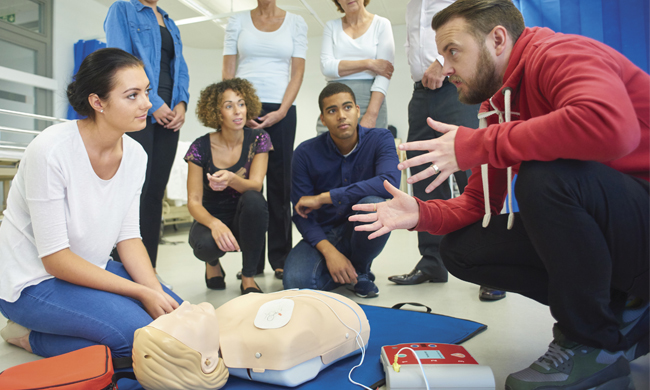How to create a plan for emergencies

(Family Features) Disasters can happen anywhere and at any time, and the emergency situations that follow can typically involve life-altering decisions, actions and consequences. No matter what region you and your family live in and regardless of which large-scale threat your area could be subject to, being prepared is crucial to handling these frightening situations in a proper manner.
Following these tips can help you be ready for emergency scenarios.
Understand potential threats. The starting point for building a preparedness plan is knowing what to prepare for depending on your geographical region, time of year and many other factors. For example, some families may need to be ready for an earthquake while people thousands of miles away need to think about the possibility of tornadoes.
Communication is key. Put into place a family communication plan that everyone frequently reviews for understanding. Knowing where to be, where your family members are and what everyone needs to do can be the difference between thinking clearly and making poor decisions. This also includes making certain that all family members have important phone numbers written down, saved or memorized.
Create a kit. What belongs in your emergency kit depends largely on the scenario you’re preparing for, but regardless of the situation, having the necessary supplies in one place can come in handy. Material items like flashlights, batteries, cellphone chargers, extra cash, maps, blankets and medical supplies are nearly universal in their usefulness for emergencies. Adding a similar emergency kit to your car could be useful, as well.
Prepare nutrition. Keep a ready supply of non-perishable snacks and drinks. If you were to lose power, you’ll want to avoid opening the refrigerator, which releases trapped cold air and reduces the amount of time food will store safely without spoiling. After most perishables are exposed to temperatures over 40 F for two hours, you’ll need to discard them, though a full, sealed freezer can hold its temperature for up to 48 hours.
Learn safety practices. All members of the family can learn how to administer first-aid or CPR in case of a health emergency or a situation that requires quick medical attention. Emergencies can easily go from bad to worse without proper training.
Store important documents. Keeping important paperwork and documents in a secure, accessible location is vital in case of an emergency that would cause evacuation. Birth certificates, insurance policies, deeds and titles, plus any other financial documents could make an evacuation, short-term or long-term, that much easier to handle. Ideally, they should be stored in a fire-proof safe in an easily accessible area of the home.
Stay informed. When it appears that an emergency could be looming, such as a severe weather situation, make sure to turn on a TV for news updates or a weather radio to stay in tune with your surroundings. Finding information online with a laptop or cellphone can be helpful as well, but make sure to keep devices charged in case of a power outage.
While disasters and the emergencies that accompany them can be difficult to think about, planning for them is one of the best ways to keep your family safe. Find more emergency preparedness tips at eLivingToday.com.

Severe Storm Prep
Storm season may bring welcome rain, but some storms are strong enough to pack a dangerous punch. Planning ahead for this year’s wicked weather can help ensure you’re ready to weather whatever Mother Nature throws at you.Make sure your family is ready for bad weather and potential power loss with these tips:
- Ensure there is a working flashlight in every room, so you can safely navigate no matter what time of day the power fails or where you are. Check the battery terminals for any signs of damage or corrosion, and replace old batteries to give you the fullest charge possible. Also invest in a quality lantern or two, so if you have to hunker down for a while, you can do so with the comfort of some far-reaching light. After all, reading or playing board games is no fun by flashlight.
- If you have advance warning of a coming storm, unplug devices that are especially susceptible to power-related damage, such as TVs and computers. In the event of storms that crop up suddenly or while you’re away from home, it’s best to keep major electronics like TVs, computers and printers plugged into a surge protector to prevent damage from flickering power or a surge when the power is restored.
- Add a backup power source. Portable generators can provide essential power during a sustained power outage. An option like the Briggs & Stratton Q6500 QuietPower Series inverter generator delivers plenty of power to keep essential appliances and electronics running for up to 14 hours on a single tank of gas. The quiet, lightweight generator has four GFCI 120V-20A outlets, one 120V-240V locking outlet and two USB outlets for flexibility to power whatever you need most. Learn more at briggsandstratton.com and visit TakeYourGeneratorOutside.com to learn more about safely operating a portable generator.
- During a storm, keep the family together in one safe location. That way you can quickly communicate if you need to make an abrupt change, such as taking more protective cover. It also minimizes the possibility of injury from making your way through the home in the dark trying to locate family members.
Photo courtesy of Getty Images (CPR training)
SOURCE:
eLivingToday.com



No comments:
Post a Comment